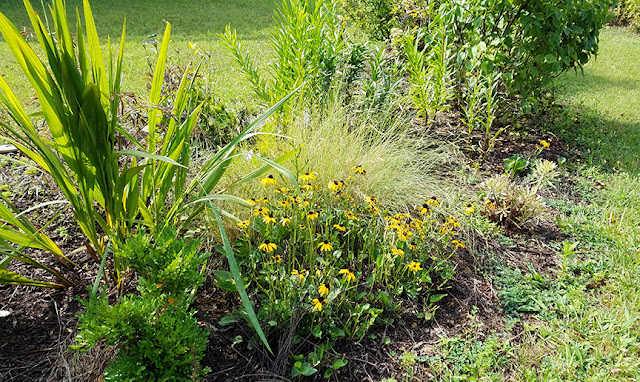 |
| Southern slender ladies' tresses orchid, colored pencil drawing, 11"h x 7" w |
After seeing a presentation by one of our very accomplished botanical artists from the Botanical Artists Society of the National Capital Region (BASNCR) group, I decided to experiment with black Stonehenge paper for drawing. I've never used a black background for any of my botanical pieces before, but I thought that it could add an element of mystery that might be appropriate to depict the tiny and intricate native orchid I found in my back yard last week.
First I sketched the entire orchid blooming spike in pencil in my sketchbook, just for practice, I then repeated the exercise drawing on the black paper using a white color pencil. The spiraling blooms are so tiny that even with a bit of enlargement, it was rather unprepossessing.
I really wanted to be able to see the details of the tiny blossoms--even using a magnifying glass, they were nearly impossible to see! But using my phone to enlarge the blossoms and taking a photo, although the photo wasn't as sharp as I would have liked, I was able to see the basic form of the individual blossoms with the characteristic green spot on the labellum (the larger lower petal or lip). The flowers are so lovely, they really deserve the extra attention, so I decided to include a section of the enlarged flowers on the right. This made the composition a bit of a challenge, as the enlarged flowers are almost touching or "kissing" the smaller flower spike, but somehow, it works. I'll probably try this again, perhaps separating the two elements with a bit more space in between.
I want to try this again on the same black paper using pastel pencils, which may give me more brilliant whites against the background. The effect of the white pencil is interesting, but it doesn't give as brilliant a white as the pastel pencils would. I will definitely try the same composition as a conventional watercolor with a white background, just to see how the different backgrounds affect the atmosphere of the piece.

















